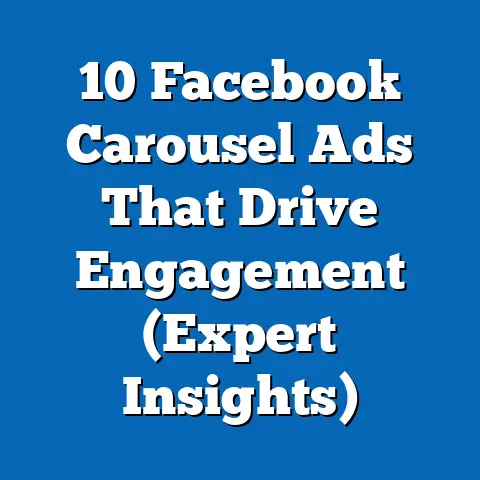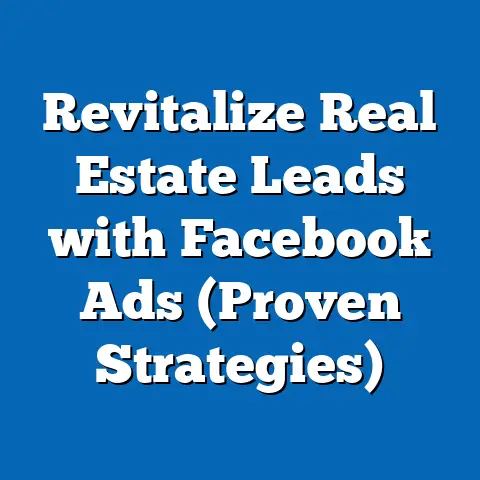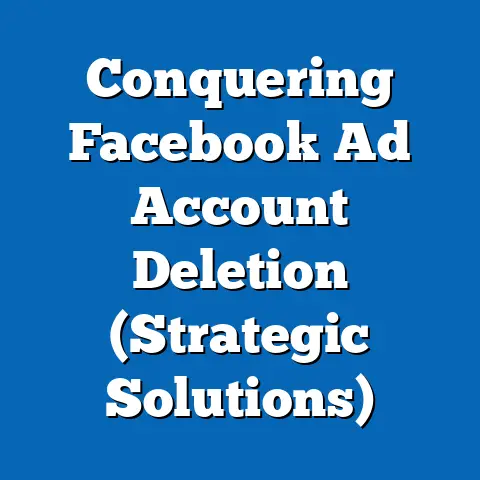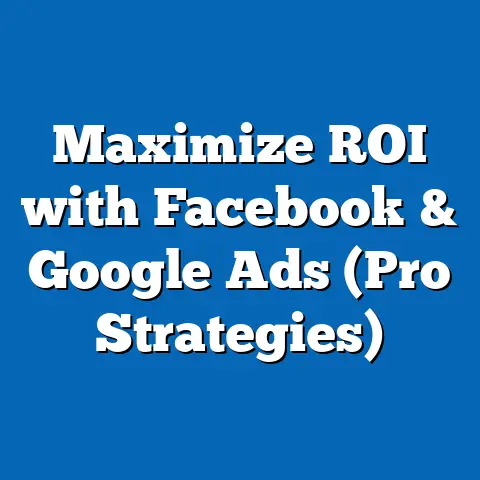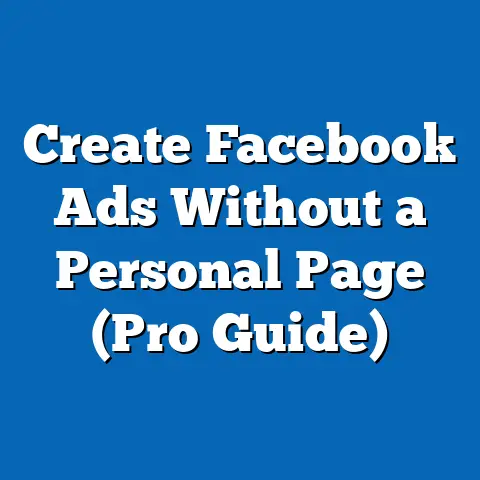Maximize Facebook Carousel Ads’ Impact (Essential Character Guide)
Let’s face it, we live in an age of overwhelming choice. I remember just the other day, I was trying to buy a new pair of running shoes online. I was bombarded with so many options, brands, styles, and technologies that I almost gave up! It felt like I needed a PhD in athletic footwear just to make a simple purchase. This isn’t unique to shoes, of course. Whether it’s finding the perfect outfit, decorating your home, or planning a dream vacation, we’re constantly bombarded with options. This abundance, while seemingly positive, often leads to decision fatigue and a sense of being overwhelmed. That’s where effective advertising comes in. It’s not just about showing products; it’s about guiding consumers through the noise, presenting them with relevant choices in an engaging, visually appealing way, and ultimately, making their lives easier. And that’s where Facebook Carousel Ads, when done right, can truly shine. They offer a unique opportunity to engage potential customers, tell a story, and drive conversions in a way that traditional single-image ads simply can’t match. In this guide, I’m going to dive deep into how to maximize the impact of your Facebook Carousel Ads, focusing on the essential “characters” you need to create compelling narratives and drive real results.
Understanding Facebook Carousel Ads
So, what exactly are Facebook Carousel Ads? Simply put, they’re an ad format on Facebook (and Instagram) that allows you to showcase multiple images or videos within a single ad unit. Think of it as a mini-slideshow that users can swipe or click through. Each “card” in the carousel can feature its own image or video, headline, description, and call-to-action (CTA) button, giving you the flexibility to highlight different aspects of your product or service.
The Carousel Format: A Closer Look
The beauty of the Carousel format lies in its versatility. Each card is essentially a mini-ad within the larger ad, allowing you to:
- Showcase multiple products: Perfect for e-commerce businesses, you can display a range of items, highlighting different features or benefits of each.
- Tell a story: Use each card to build a narrative, guiding the viewer through a journey that culminates in a desired action.
- Highlight different aspects of a single product: Instead of just showing one image of your product, you can showcase its features, benefits, use cases, and even customer testimonials.
- Drive traffic to multiple landing pages: Each card can link to a different page on your website, allowing you to target specific interests or needs.
- Showcase a process or tutorial: Break down a complex process into simple steps, each represented by a card in the carousel.
Why Carousel Ads? The Benefits
Compared to traditional single-image ads, Carousel Ads offer a range of advantages:
- Higher Engagement Rates: The interactive nature of Carousel Ads encourages users to swipe and explore, leading to higher engagement rates. People are more likely to spend time with an ad that offers them something to interact with.
- Enhanced Storytelling Potential: As I mentioned earlier, Carousel Ads allow you to tell a more compelling story than a single image ever could. You can build a narrative, create intrigue, and guide the viewer through a journey.
- Increased Click-Through Rates (CTR): By showcasing multiple options and linking to specific landing pages, Carousel Ads can significantly increase your CTR.
- Better Lead Generation: By highlighting different aspects of your product or service, you can attract a wider range of potential customers and generate more qualified leads.
- Improved Brand Awareness: Carousel Ads allow you to showcase your brand’s personality and values in a more engaging way, leading to improved brand awareness and recall.
Takeaway: Facebook Carousel Ads are a powerful tool for engaging potential customers, telling compelling stories, and driving conversions. Their versatility and interactive nature make them a valuable asset for any marketer looking to improve their Facebook advertising performance.
The Psychology of Carousel Ads
Beyond the technical aspects, understanding the psychology behind Carousel Ads is crucial for maximizing their impact. It’s not just about showing products; it’s about understanding how people process information, make decisions, and form emotional connections.
The Power of Visual Storytelling
Humans are wired for stories. From ancient cave paintings to modern-day movies, we’ve always been drawn to narratives that capture our imagination and evoke emotions. Visual storytelling takes this inherent human connection and applies it to marketing, using images and videos to tell a story that resonates with potential customers.
Carousel Ads are particularly well-suited for visual storytelling because they allow you to build a narrative across multiple cards. You can use each card to introduce a character, set the scene, build tension, and ultimately, offer a resolution. Think about it like a mini-movie trailer for your product or service.
Reducing Cognitive Load
Cognitive load refers to the amount of mental effort required to process information. When faced with too much information, our brains become overloaded, leading to confusion and inaction. This is especially true in the digital age, where we’re constantly bombarded with information from all directions.
Carousel Ads can help reduce cognitive load by presenting information in an easy-to-digest format. Instead of overwhelming users with a wall of text or a confusing website layout, you can break down complex information into simple, visually appealing cards. This makes it easier for users to understand your message and make a decision.
Creating Emotional Connections
Advertising isn’t just about logic and reason; it’s about emotion. People are more likely to buy from brands they feel a connection with, brands that understand their needs and values. Carousel Ads can help you create emotional connections by telling stories that resonate with your target audience.
Think about the emotions you want to evoke with your ads. Do you want to inspire, entertain, reassure, or empower? Once you’ve identified the desired emotions, you can craft your Carousel Ads to tap into those feelings. Use images and videos that evoke emotion, write copy that speaks to your audience’s needs and desires, and create a narrative that resonates with their values.
Takeaway: Understanding the psychology behind Carousel Ads is crucial for maximizing their impact. By leveraging visual storytelling, reducing cognitive load, and creating emotional connections, you can craft ads that resonate with your target audience and drive real results.
Essential Characters in Carousel Ads
Now, let’s get to the heart of this guide: the essential “characters” you need to create compelling Carousel Ads. When I say “characters,” I’m not just talking about people. I’m talking about the key elements that bring your ads to life, the elements that capture attention, build trust, and drive action.
The Hero: Your Product or Service
The Hero is the star of the show, the main product or service you’re advertising. It’s what you want people to remember and ultimately, purchase. When showcasing your Hero, it’s important to:
- Highlight its key features and benefits: Don’t just list features; explain how those features benefit the user.
- Show it in action: Use images or videos to demonstrate how your product or service works and how it can solve a problem or fulfill a need.
- Focus on the value it provides: What makes your product or service unique and valuable? Why should people choose it over the competition?
- Make it visually appealing: Use high-quality images or videos that showcase your product or service in its best light.
The Guide: Testimonials, User-Generated Content, and Influencer Endorsements
The Guide is the voice of authority, the trusted source that lends credibility to your Hero. This can take many forms, including:
- Customer Testimonials: Real-life testimonials from satisfied customers can be incredibly powerful. They provide social proof and demonstrate that your product or service delivers on its promises.
- User-Generated Content (UGC): Encourage customers to share photos and videos of themselves using your product or service. This type of content is authentic and relatable, making it highly effective.
- Influencer Endorsements: Partner with influencers who align with your brand and target audience. Their endorsements can help you reach a wider audience and build trust.
When using a Guide, it’s important to:
- Choose credible sources: Make sure your testimonials and endorsements come from reputable sources.
- Highlight specific benefits: Don’t just say “This product is great!” Explain why it’s great.
- Make it authentic: Avoid overly polished or scripted testimonials. Authenticity is key.
The Audience: Understanding Your Target Persona
The Audience is the group of people you’re trying to reach with your ads. Understanding your audience is crucial for creating ads that resonate with them. This means:
- Defining your target persona: Who are you trying to reach? What are their demographics, interests, and needs?
- Creating relatable personas: Develop detailed profiles of your ideal customers, giving them names, backstories, and motivations.
- Tailoring your message: Speak directly to your audience’s needs and desires. Use language and imagery that resonates with them.
For example, if you’re selling eco-friendly cleaning products, your target audience might be environmentally conscious millennials who are looking for sustainable and affordable cleaning solutions. Your ads should highlight the eco-friendly aspects of your products and speak to the values of this target audience.
Takeaway: By understanding the essential characters in your Carousel Ads – the Hero, the Guide, and the Audience – you can create compelling narratives that capture attention, build trust, and drive action.
Crafting Compelling Content for Each Carousel Card
Now that we’ve covered the essential characters, let’s dive into the nitty-gritty of crafting compelling content for each Carousel card. Remember, each card is a mini-ad within the larger ad, so it’s important to make each one count.
Cohesive Branding
Consistency is key. Your Carousel Ads should reflect your brand’s identity and values. This means:
- Using consistent colors and fonts: Stick to your brand’s color palette and typography.
- Maintaining a consistent tone of voice: Use language that aligns with your brand’s personality.
- Using high-quality images and videos: Ensure that all visuals are consistent with your brand’s aesthetic.
Compelling Headlines and Calls-to-Action (CTAs)
Your headlines and CTAs are the most important elements of each card. They’re what capture attention and drive action. Here are some tips for writing effective headlines and CTAs:
- Keep it short and sweet: Get straight to the point.
- Highlight the key benefit: What will users get by clicking on your ad?
- Use strong action verbs: Words like “Shop Now,” “Learn More,” and “Get Started” are effective CTAs.
- Create a sense of urgency: Use phrases like “Limited Time Offer” or “While Supplies Last” to encourage immediate action.
Selecting Attention-Grabbing Visuals
Your images and videos are what will initially capture attention. Choose visuals that are:
- High-quality: Use professional-grade images and videos.
- Relevant: Ensure that the visuals are relevant to the product or service you’re advertising.
- Visually appealing: Choose images and videos that are aesthetically pleasing and capture attention.
- Action-oriented: Show your product or service in action.
Structuring Content for Maximum Impact
The order in which you present your cards can have a significant impact on your ad’s performance. Here are some strategies for structuring your content:
- Start with a hook: Capture attention with a compelling image or video and a catchy headline.
- Build a narrative: Use each card to build on the previous one, creating a cohesive story.
- Highlight key benefits: Showcase the most important benefits of your product or service.
- End with a strong CTA: Encourage users to take action.
Takeaway: Crafting compelling content for each Carousel card requires careful attention to detail. By focusing on cohesive branding, compelling headlines and CTAs, attention-grabbing visuals, and strategic content structuring, you can create ads that capture attention, engage users, and drive conversions.
Effective Visual Storytelling Techniques
Now, let’s delve deeper into the art of visual storytelling. As I mentioned earlier, humans are wired for stories, and Carousel Ads provide a unique opportunity to leverage this inherent connection.
Principles of Visual Storytelling
Here are some key principles of visual storytelling:
- Know your audience: Understand their needs, desires, and values.
- Establish a clear narrative: What story are you trying to tell?
- Create compelling characters: Who are the heroes, guides, and villains in your story?
- Use strong visuals: Choose images and videos that evoke emotion and capture attention.
- Create a sense of tension: Build suspense and keep the viewer engaged.
- Offer a resolution: Provide a solution to the problem or a fulfillment of the need.
Color Theory and Typography
Color and typography play a crucial role in visual storytelling. They can evoke emotions, create a mood, and reinforce your brand’s identity.
- Color Theory: Understand the psychology of color. Different colors evoke different emotions. For example, blue is often associated with trust and reliability, while red is associated with excitement and energy.
- Typography: Choose fonts that are easy to read and that reflect your brand’s personality. Avoid using too many different fonts, as this can create visual clutter.
Transitions and Flow
The transitions between Carousel cards are just as important as the content of each card. You want to create a seamless experience that guides the viewer through your story. Here are some tips for creating effective transitions:
- Use visual cues: Use elements like lines, arrows, or color gradients to guide the viewer’s eye from one card to the next.
- Maintain a consistent theme: Ensure that all cards are visually consistent and that they flow together seamlessly.
- Use animation: Subtle animations can help draw attention to key elements and create a more engaging experience.
Takeaway: Effective visual storytelling is crucial for maximizing the impact of your Carousel Ads. By understanding the principles of visual storytelling, leveraging color theory and typography, and creating seamless transitions, you can craft ads that resonate with your target audience and drive real results.
Targeting and Retargeting Strategies
You can have the most beautifully designed Carousel Ad in the world, but if you’re not showing it to the right people, it won’t be effective. That’s why targeting and retargeting are so important.
Audience Targeting
Facebook offers a wide range of targeting options, allowing you to reach specific demographics, interests, and behaviors. Here are some of the most common targeting options:
- Demographics: Target users based on age, gender, location, education, and other demographic factors.
- Interests: Target users based on their interests, hobbies, and passions.
- Behaviors: Target users based on their online behavior, such as their purchase history, website visits, and app usage.
- Custom Audiences: Create custom audiences based on your own data, such as your email list or website visitors.
- Lookalike Audiences: Create lookalike audiences based on your existing customers. Facebook will find users who share similar characteristics with your best customers.
Retargeting Strategies
Retargeting allows you to show ads to people who have already interacted with your brand, such as website visitors or social media followers. This is a highly effective strategy because these users are already familiar with your brand and are more likely to convert. Here are some common retargeting strategies:
- Website Retargeting: Show ads to people who have visited your website.
- Engagement Retargeting: Show ads to people who have interacted with your Facebook page or Instagram profile.
- Video Retargeting: Show ads to people who have watched your videos.
Takeaway: Targeting and retargeting are crucial for maximizing the impact of your Carousel Ads. By understanding your audience and leveraging Facebook’s targeting options, you can reach the right people with the right message and drive real results.
Analyzing Performance Metrics
Once you’ve launched your Carousel Ads, it’s important to track their performance and make adjustments as needed. Here are some key performance indicators (KPIs) to track:
- Click-Through Rate (CTR): The percentage of people who click on your ad.
- Engagement Rate: The percentage of people who interact with your ad, such as liking, commenting, or sharing.
- Conversion Rate: The percentage of people who take a desired action, such as making a purchase or filling out a form.
- Cost Per Click (CPC): The average cost you pay for each click on your ad.
- Cost Per Conversion (CPC): The average cost you pay for each conversion.
- Return on Ad Spend (ROAS): The amount of revenue you generate for every dollar you spend on advertising.
Facebook Insights provides a wealth of data about your ad performance. Use this data to identify what’s working and what’s not, and make adjustments to your targeting, creative, and bidding strategies accordingly.
Takeaway: Analyzing performance metrics is crucial for optimizing your Carousel Ads and maximizing your ROI. By tracking key KPIs and making data-driven decisions, you can ensure that your ads are performing at their best.
Real-World Examples of Successful Carousel Ads
Let’s take a look at some real-world examples of successful Carousel Ads and analyze what made them effective.
- Example 1: An E-commerce Brand Showcasing Multiple Products: This brand used Carousel Ads to showcase a range of their products, highlighting different features and benefits of each. They used high-quality images and compelling headlines to capture attention and drive traffic to their website.
- Example 2: A Travel Company Promoting a Destination: This company used Carousel Ads to showcase the beauty and attractions of a particular destination. They used stunning images and videos to evoke emotion and inspire wanderlust.
- Example 3: A Software Company Explaining a Complex Feature: This company used Carousel Ads to break down a complex feature into simple steps. They used clear and concise language and helpful visuals to make the feature easy to understand.
What do these examples have in common? They all:
- Understand their audience: They know who they’re trying to reach and what their needs and desires are.
- Tell a compelling story: They use visuals and language to create a narrative that resonates with their target audience.
- Highlight key benefits: They showcase the most important benefits of their product or service.
- Use strong CTAs: They encourage users to take action.
Takeaway: By studying successful Carousel Ads, you can learn valuable lessons about what works and what doesn’t. Use these examples as inspiration for your own ads and adapt them to your specific needs and goals.
Conclusion
In conclusion, maximizing the impact of your Facebook Carousel Ads requires a strategic approach that combines creativity, data analysis, and a deep understanding of your target audience. By focusing on the essential characters – the Hero, the Guide, and the Audience – you can create compelling narratives that capture attention, build trust, and drive action.
Remember to:
- Understand the psychology behind Carousel Ads: Leverage visual storytelling, reduce cognitive load, and create emotional connections.
- Craft compelling content for each card: Focus on cohesive branding, compelling headlines and CTAs, attention-grabbing visuals, and strategic content structuring.
- Target and retarget effectively: Reach the right people with the right message.
- Analyze performance metrics: Track key KPIs and make data-driven decisions.
- Learn from real-world examples: Study successful Carousel Ads and adapt them to your own needs and goals.
By applying the insights gained from this guide, you can significantly enhance the effectiveness of your Carousel Ads and drive better results for your marketing efforts. Now go out there and create some amazing Carousel Ads! I’m excited to see what you come up with!

